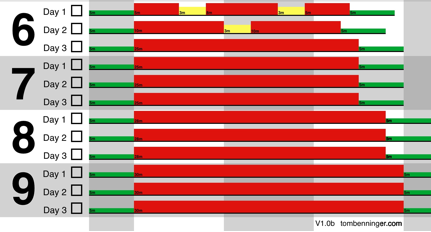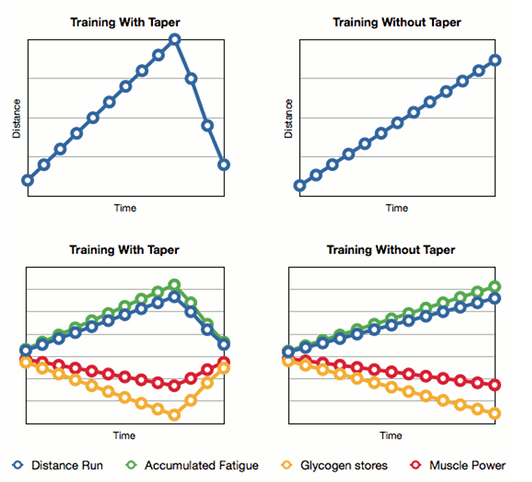Effect of Fatigue on Marathon Performance
I came across an interesting article this morning from the Journal of Sports Science and Medicine called “Kinematic changes during a marathon for fast and slow runners.” I’m a sucker for research articles about running. The study observed 179 participants from the Salt Lake City Deseret News Marathon and basically evaluated the effects of fatigue on running motion at miles 5 and 25 (kilometers 8 and 40) for runners that finished the marathon between 2:20:47 and 5:30:10.
The results of the study showed that regardless of speed (finishing time), both fast and slow runners demonstrated significant changes in their movement characteristics between the two distance markers due to fatigue. Of the variables measured, I found it most interesting that, at mile 25, all participants showed increased stride length, increased ground contact time, and decreased speed. Everyone’s turnover rate essentially decreased relative to the first distance marker and everyone slowed down, so what was the underlying difference between the fast runners and slow runners?
It’s called peak knee flexion during support, which is really just fancy terminology that refers to the active range of motion for your knees while one foot is on the ground. Apparently, faster runners demonstrate a fuller range of movement and maintain much of it for the duration of an entire marathon. This kinematic characteristic suggests that faster runners are also likely to have greater muscular strength around their knees (more push-off power) and can produce a more active range of motion for an extended period of time,compared to slower runners.
It’s one of several reasons why runners need to perform some measure of resistance and weight training. At the very least, it helps increase the stability of your running form and ensures a better distribution of muscular strength. For some quick mobility exercises you can knock out at home, there’s always: leg lifts, knee extensions, quadricep stretches, and squats. Of course, a regular dose of hill training can probably help you get the job done too 😉



